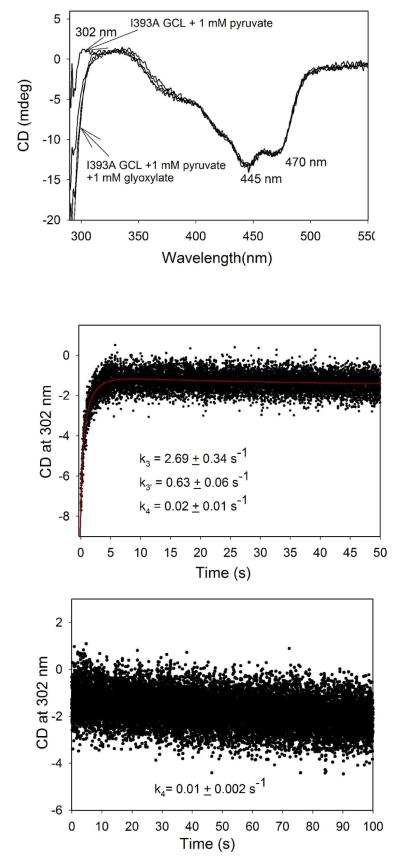Figure 9.
Formation of an acetylglycolate product by I393A GCL as detected by CD. (Top) CD spectra of I393A GCL recorded in the presence of 1 mM pyruvate and on addition of 1 mM glyoxylate at 6 °C. The I393A GCL was diluted to a concentration of active centers of 30.8 μM in 0.1 M KH2PO4 (pH 7.6) containing 0.5 mM ThDP, 2.5 mM MgCl2, 1.0 mM DTT, 10 μM FAD and 1% glycerol. (Middle) Time-dependent formation of an acetylglycolate-ThDP complex and product release. The I393A GCL (4.69 mg/mL, concentration of active centers = 72.4 μM) in buffer as in (Top) was pre-incubated with 1 mM pyruvate in one syringe and was then mixed at 6 °C with 1.0 mM glyoxylate in the second syringe. Data were fitted to a triple exponential (eq 7). (Bottom) Time-dependent release of a acetylglycolate product. Conditions were the same as in (Middle) but 4 mM glyoxylate was present in the second syringe.

